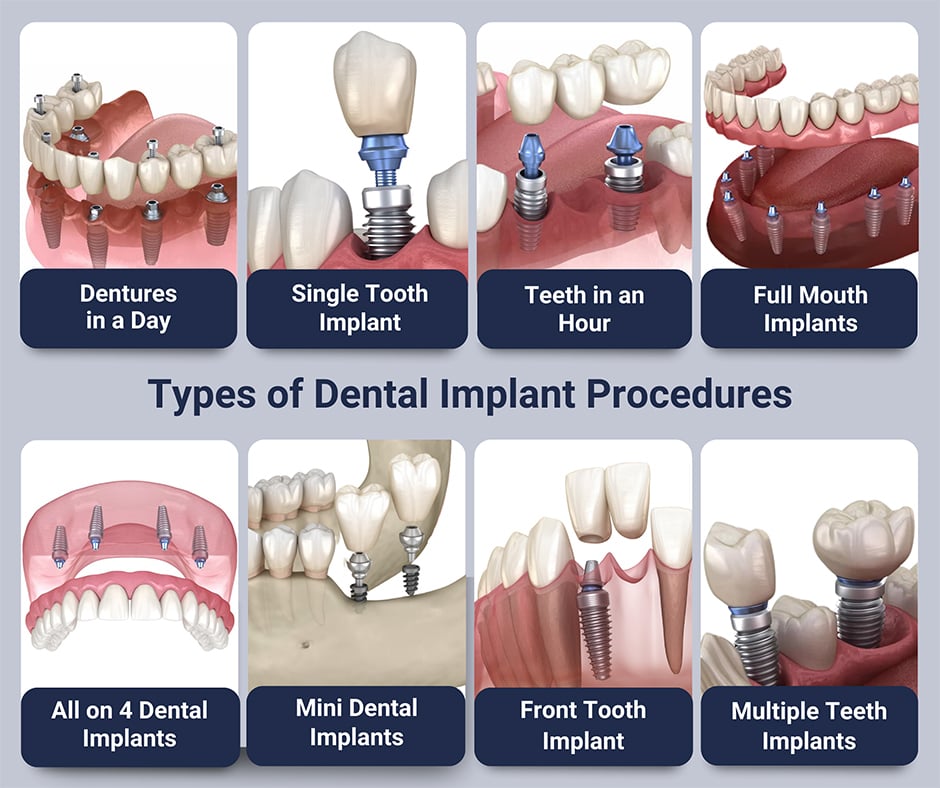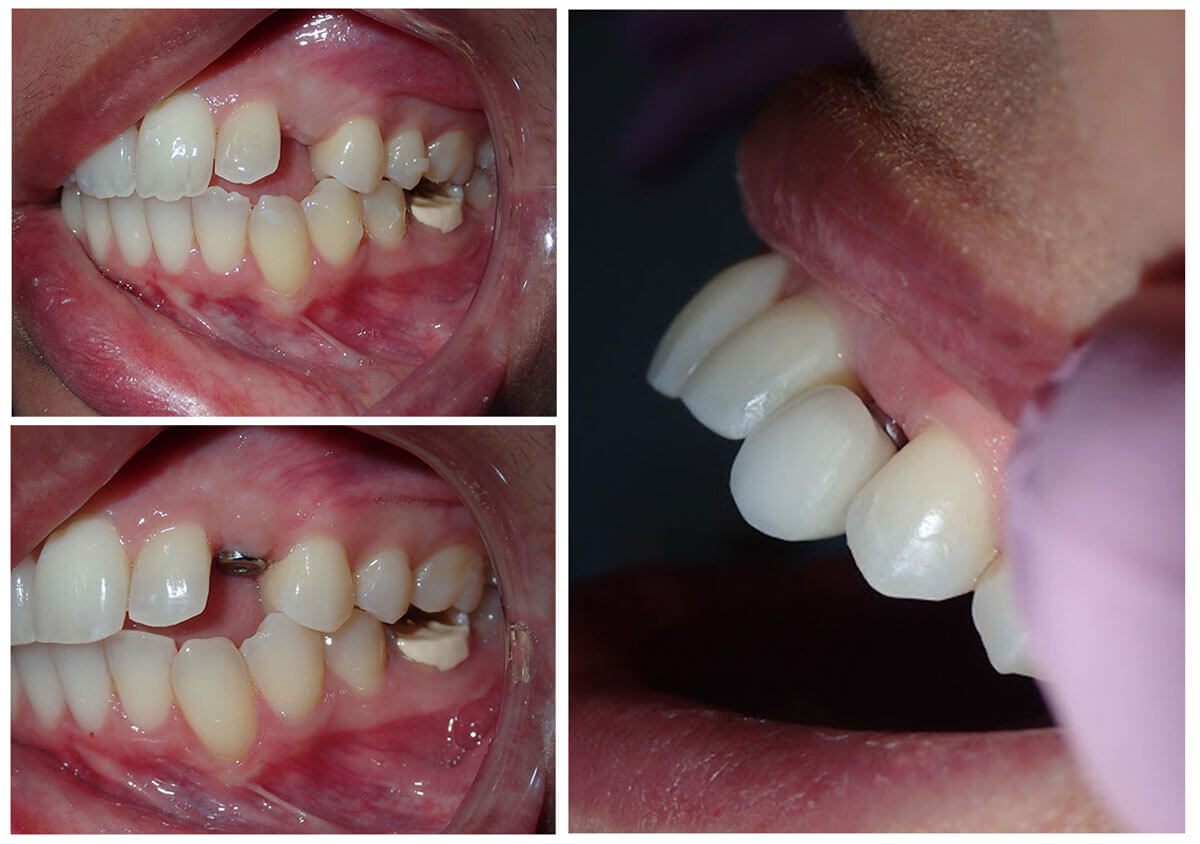Fascination About Dental Implants
Table of ContentsRumored Buzz on Dental ImplantsDental Implants Can Be Fun For EveryoneAll about Dental ImplantsWhat Does Dental Implants Do?
are clinical devices operatively implanted right into the jaw to bring back an individual's ability to eat or their appearance. They give support for fabricated (fake) teeth, such as crowns, bridges, or dentures. When a tooth is shed because of injury or condition, a person can experience difficulties such as fast bone loss, defective speech, or adjustments to chewing patterns that cause discomfort.
Framework of The Dental Implant System picking oral implants, speak with your dental copyright regarding the prospective benefits and dangers, and whether you are a candidate for the treatment. Things to consider: Your total health and wellness is an important consider determining whether you are an excellent candidate for dental implants, the length of time it will certainly require to heal, and for how long the implant may remain in area.
Cigarette smoking may impact the healing process and lower the long-lasting success of the implant. The recovery procedure for the dental implant body might take a number of months or longer, during which time you commonly have a short-lived joint in place of the tooth. the dental implant treatment: Thoroughly adhere to the dental hygiene directions offered to you by your dental copyright.
Some Known Facts About Dental Implants.
Implant failing can cause the demand for another surgical procedure to repair or replace the implant system. Brings back the capability to chew Brings back cosmetic appearance Helps keep the jawbone from shrinking due to bone loss Preserves the health of the surrounding bone and periodontals Aids maintain nearby (nearby) teeth stable Enhances quality of life Damage to surrounding natural teeth throughout dental implant placement Injury to the surrounding tissues throughout surgery, such as sinus opening Injury throughout surgical treatment (for example, fracture of bordering jawbone) Poor feature, such as feeling like the teeth do not bite with each other normally An experience that the tooth is loosened or twisting in position resulting from a joint screw loosening Implant body failure (looseness of the dental implant body) because of systemic infection, which may be more most likely in individuals with unrestrained diabetes due to local infection in bone and gum tissues sustaining the implant body due to blog postponed recovery, which might be more probable in people who smoke Difficulty cleansing the gums around the dental implant, resulting in inadequate oral hygiene Untreated gum disease Post-surgical numbness because of nerve impingement or damage Constantly alert healthcare providers and imaging specialists that you have oral implants before any kind of magnetic resonance imaging (MRI) or x-ray treatments.
FDA is not knowledgeable about any type of damaging events reported for MRI or x-ray treatments with oral implants. Dental implants systems are normally constructed from materials that comply with global consensus requirements of the International Company for Standardization (ISO) or ASTM International. These standards have details of what makes a secure product.
Dental implant systems are assessed according to global agreement criteria. Biocompatibility testing, to reveal that bodily call with the gadget does not cause complications like irritability or allergic response, is part of the evaluation that aids guarantee the products in the dental implant system are secure and do not trigger adverse results when implanted in people.

Indicators on Dental Implants You Need To Know
Some individuals are not eligible for oral implant surgical treatment. It is for dental doctors to operate on individuals with: intense illnessuncontrollable metabolic diseasebone or soft cells disease or infectionIf these concerns are fixed, an individual can have the surgical procedure. Dental Implants. In, dental doctors avoid operating on individuals with: If people with any of the above undergo dental implant surgical procedure, there is a higher navigate to these guys danger of the dental implant stopping working
Some individuals have a jawbone abnormality that prevents adequate bone for an implant from establishing. The doctor will after that use a bone or bone replacement to repair and develop up the area.
Oral dental implant surgical procedure is a customized process. It's not the exact same for everybody. The adhering to offers a basic review of what you can anticipate your dentist, oral specialist, periodontist or prosthodontist to do: Put the dental implant operatively. Provide you time to heal. Attach the post and final crown, bridge or denture.
Next, your doctor will carefully place the dental implant into your jaw. Your cosmetic surgeon will certainly rearrange your gums and shut the cut with stitches (Dental Implants). If your implant is near the front of your mouth, your dentist will certainly make a short-term tooth for you to wear till you heal. That way, you will not have a space in your smile while you recoup.
Getting The Dental Implants To Work
Your provider can tell you what to expect in your scenario. Throughout the recovery phase, your jawbone needs to fuse to the dental implant. This process, called osseointegration, is vital for stability and long-lasting success. This procedure can take anywhere from three to 9 months. In some cases, it may take much longer.
Once your dental implant heals, your dental practitioner can attach the joint (little port article) and your last reconstruction (crown, bridge or denture). This usually takes about one hour to complete and might call for a 2nd small surgical procedure. You should not really feel any type of discomfort throughout your oral implant treatment since your service provider will use medication to numb your gums.